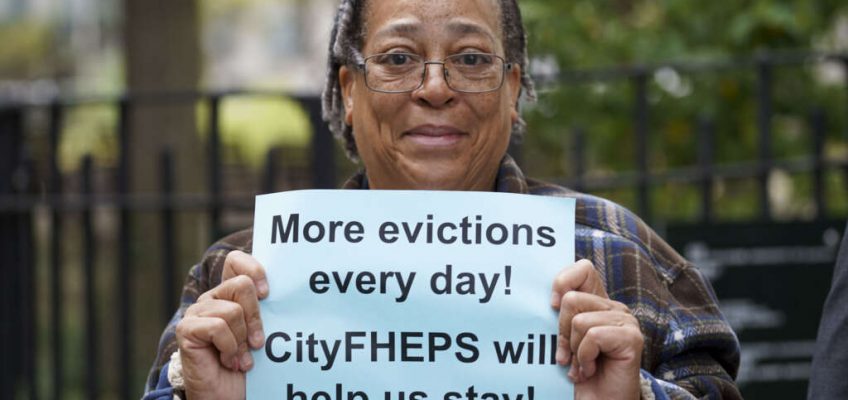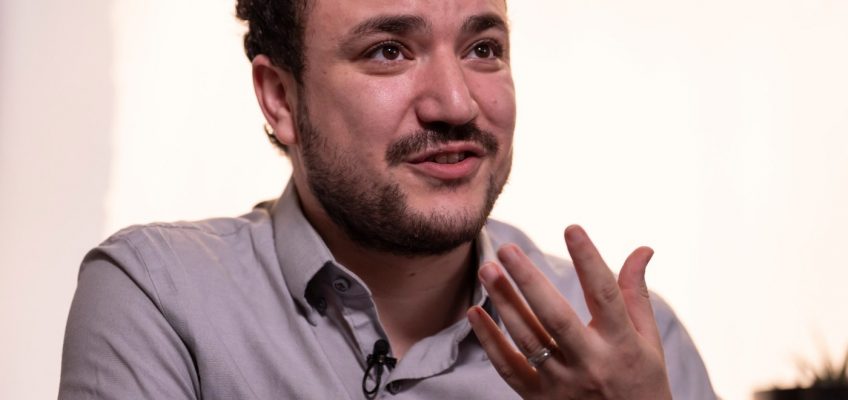Search and rescue teams were still combing the mangled banks of the Guadalupe River Tuesday at Patti and Kent Richardson’s mildewing home in Center Point. Vultures and helicopters circled overhead, looking for the same thing the Richardsons had so recently just narrowly avoided: death.
As they were making their morning coffee early on July 5, Kent received a text from his brother asking if they had flooded. Opening his front door to take a look, he immediately heard the roar of the river just across Center Point River Road. He called his brother, who said he’d seen a weather report showing images of people on the roofs of flooded homes in Ingram, another Kerr County town only six miles away.
The couple crossed the road toward the berm on the other side to check things out. They’d never before seen the river that high. Within minutes, it flowed onto the road. By the time they had a chance to put on proper pants and shoes, water was already filling the low-lying areas of their yard. Kent waded through the floodwaters toward the shed where he kept a ladder. By the time he set it up to reach the outside entrance of the attic, floodwaters were rushing onto the property. Patti went up first. Kent grabbed the dog and followed.
They made it just in time to watch the waters rise more than six feet, surrounding their home. They were marooned.
The Richardsons already knew a lot about flood dangers—too much. They moved to this riverfront property from Port Aransas about five years ago to “escape hurricanes,” as Kent put it. They had thrice evacuated their Port Aransas home, including during Hurricane Harvey in 2017, after receiving clear warnings and evacuation orders. This time, they say, the communication with Kent’s brother was their first and only warning. Overnight, they’d never heard anything about flood watches or warnings via cell phone.
Kent Richardson found out the flood was coming from his brother. (Candice Bernd)
In some ways, they felt lucky. Their son’s family normally lives with them in an RV on the property but had traveled out of town for the Fourth of July holiday. It was this blessing that was foremost on their minds as they watched the floodwaters rise: “We just kind of sat there, and I said, ‘Kent, I’m so glad my kids aren’t here, my grandkids aren’t here,’” Patti said.
That blessing was put into even sharper relief as the flood receded in the following days. Traveling back and forth from a relative’s house in nearby Comfort, the couple watched as rescue crews began searching the banks outside their house. It wasn’t long before a first responder told Kent that at least six bodies had been found just across the river.
Those flood victims are part of a death toll that reached 120 as of Wednesday—with even more than that still missing—as a result of the July 4 Hill Country flash flooding. In Kerr County alone, the toll includes dozens of children, many from the Christian summer retreat Camp Mystic.
The Richardsons are among the tens of thousands of Kerr County residents at the epicenter of “flash flood alley” in the Texas Hill Country who were caught off-guard in the early hours of the morning as the floodwaters rose during torrential rains—as much as 15 inches fell in some places in only hours. While the National Weather Service (NWS) issued its first flash flood warning for the county at 1:14 am on July 4, it remains unclear how many residents actually received that notice via cell phone or whether local county officials saw it in time to meaningfully mobilize.
The Texas Newsroom has reported that first responders requested Kerr County’s own mass-emergency alert system be triggered early on the morning of July 4, seemingly contradicting an earlier statement given by Kerr County Judge Rob Kelly stating that the area had no alert system. Local dispatchers reportedly delayed volunteer firefighters’ 4:22 a.m. request for a “CodeRED” alert, saying they required preauthorization.
County officials have continued to deflect questions at press conferences about what actions they took after NWS warnings came out when many were asleep, saying they remain focused on search and rescue operations.
The Richardsons don’t know why they didn’t receive any cell phone alert from the NWS. But they told the Texas Observer they would have “absolutely” benefitted from outdoor sirens, something that had been considered but not implemented by the county. The county had also requested state help paying for an upgraded warning system but been denied, as reported by the Houston Chronicle.
The climate change-fueled torrential downpour that caused the Guadalupe to rise more than 22 feet in three hours—in what is already the state’s deadliest flood since 1921—has now put the county’s lack of sirens into the spotlight. Texas lawmakers had a chance just earlier this year to establish a statewide council to lay out a new disaster response plan including outdoor sirens, but the measure failed.
The Salvation Army in Kerrville on July 8 (Candice Bernd)
The Richardsons want to see the same kind of studies and investment in Texas’ Hill Country communities that the state’s coastline receives. “Living on the coast—look at Houston and look at Louisiana—we have hurricanes. People need to be evacuated. … And here’s the same way, these flash floods—this is not new. It’s happened several times,” Patti told the Observer.
The couple has received an outpouring of support from everyday Texans in the Hill Country. Area residents, including those directly impacted, have rapidly organized mutual aid networks that have not only kept the Richardsons supplied with hot meals, water, and other essential items but are also helping them clean up and recover.
“We had so many people here yesterday. It was, like, too many people … all trucks just lined up, and people just working, working, working. It was amazing,” Patti said.
At the Salvation Army office in Kerrville, dozens of volunteers worked to deliver supplies in a steady rotation in and out of the building Tuesday, while others organized kits for delivery. A Salvation Army staffer, speaking on background because she wasn’t authorized to give an interview, told the Observer that more than 450 people had signed in to volunteer since July 4. Many more, she says, have simply shown up without registering.
It was a similar scene at Kerrville’s Cross Kingdom Church, where the exhausted pastor, Justin Carpenter, told the Observer that the city approved the church to become a distribution center on the afternoon of July 5. Almost every church in the area, he says, has become a distribution hub.
The Richardsons say part of their property is in the designated floodplain but their home was elevated enough to be considered outside it. According to estimates from a statewide floodplain project still under review by the Texas Water Development Board, 1.3 million Texas homes are on flood-prone land A Houston Chronicle analysis of federal flood maps found that some buildings at Camp Mystic and other Kerr County camps where many of the dead were staying are likewise situated on lands officials consider “extremely hazardous.”
Those state flood maps, which were required to be updated under a law passed post-Hurricane Harvey, remain in draft form and have not all been released. Others add that in most Texas counties, the older Federal Emergency Management Agency (FEMA) flood maps are vastly underestimating risks to Texans by failing to account for increased rainfall patterns as a result of rising global temperatures.
“With climate change, which we don’t talk about in Texas, most of our floodplain maps are obsolete. They’re out of date. The rainfall amounts are not nearly large enough to predict the type of floods we’re going to have. So whatever [Texans] think it is, it’s worse than they think,” said Jim Blackburn, a Rice University professor specializing in environmental law. “I am so tired of hearing people talk about, ‘Oh, it’s a 100-year event.’ … We’re not analyzing it correctly.”
The Hill Country flooding is already among the deadliest floods in Texas history. (Candice Bernd)
The state typically treats floodplain maps “as environmental red tape” instead of as important planning documents that need to be followed, Blackburn said, allowing for continued overdevelopment in the state’s most climate-sensitive areas.
Overdevelopment of the Guadalupe River watershed is something Patti told the Observer she’s also worried about. The Richardsons’ house is still one of the only residential properties along Center Point River Road, but she said there’s been a lot of construction in the area since they moved in. “You have a river that saturates the land, and then you have people start building concrete, concrete, concrete, concrete…”
Central Texas already has densely packed soils that are a big part of why the area is dubbed “flash flood alley.” The region’s hills and porous karst limestone formations act like a sieve for rainfall, channeling runoff into the area’s creeks and rivers more rapidly than occurs in other parts of the state. Continued development is turning that sieve into a perfect funnel. But a project that Texas A&M had been running to help rural counties gather more flood data and try to predict flooding ran out of money; a related effort by Rice University has only enough funding to help two counties.
To make matters worse, President Donald Trump now hopes to axe the federal agency responsible for flood mapping and for federal flood relief programs, saying he intends to phase out FEMA completely after hurricane season ends in November. That would put the responsibility for mapping back onto the state—something Blackburn said he thinks the state doesn’t have adequate resources to do alone. Other federal agencies crucial to mapping and prediction of future flooding are also under the knife: The National Oceanic Atmospheric Administration and the National Weather Service have taken substantial hits from the Trump administration’s so-called “Department of Government Efficiency” cuts.
Still, it’s unclear whether more accurate maps could have done much to prevent the tragedy at Camp Mystic and elsewhere along the banks of the Guadalupe. The camp was well outside of Kerrville’s city limits, and county officials lack the jurisdiction to implement zoning rules to limit or bar development in the 100-year flood plain. Older structures are typically grandfathered in from federal flood rules enacted in the 1970s that normally would bar development inside the more hazardous river floodways, though those rules may prevent them from being rebuilt, Blackburn said.
The housing affordability crisis also impacts the issue: Homes in the floodplains are rapidly becoming a more viable option not only for those flocking to the state from more expensive parts of the country but among the state’s own growing population. The Hill Country has grown in population by more than 9 percent since 2020.
Even if it’s ultimately impossible to keep people out of the state’s most dangerous flood zones, accurate climate data remains crucial to informing Texans of the true risks of living there—as well as to warning them of imminent threats. The Richardsons said they’d rather rebuild here than pick up and leave the life they’d made altogether.
“I think we’re gonna stay here. At the coast [in Port Aransas], we always had a to-go bag. We had a plan. We had an evacuation route—something we knew to do. And we always evacuated,” Patti says. After last weekend, she said, the couple plans to start following the same protocol here. “We are going to have a to-go bag, you know, if it even rains a little bit, we’re going.”
The post ‘I Think We’re Gonna Stay’: Texans Hang On in Tragedy-Stricken Hill Country appeared first on The Texas Observer.




